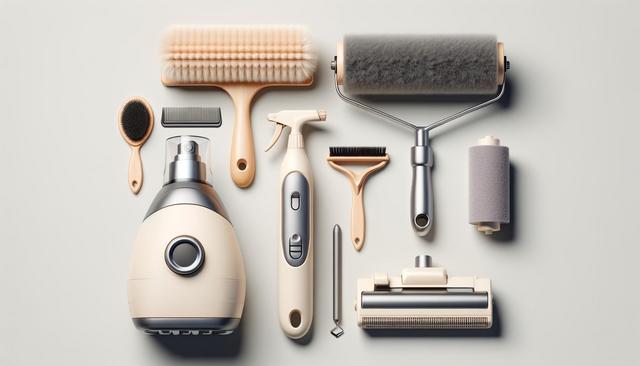Understanding the Pet Hair Problem
Anyone who lives with a furry companion knows that pet hair has a way of getting everywhere. Whether it’s embedded in upholstery or floating across hardwood floors, pet hair can quickly make a clean home look messy. The issue is particularly noticeable during seasonal shedding, but it can be a year-round concern depending on the type of pet and their grooming needs. Understanding the nature of pet hair can help in selecting the most effective tools for removal. For example, short-haired pets might shed less visibly but more frequently, while long-haired pets leave behind more noticeable clumps. Knowing the type of hair and its behavior helps in determining which tools will work best for different surfaces and situations.
In addition, pet hair can cause problems for allergy sufferers. Dander often clings to the hair itself, making it essential to remove it thoroughly from living spaces. Regular cleaning with the right tools not only improves the appearance of your home but also enhances air quality and overall comfort.
Brushes and Grooming Tools
One of the most effective ways to reduce the spread of pet hair is by addressing it at the source—your pet. Grooming tools come in a variety of designs, each tailored to specific coat types and shedding levels. Regular brushing helps remove loose fur before it ends up on your furniture and floors. Popular options include:
- Deshedding tools: Designed to reach through the topcoat and remove loose undercoat hair.
- Slicker brushes: Ideal for detangling and removing loose hair from longer coats.
- Rubber grooming mitts: Effective for short-haired pets and provide a gentle massage while collecting hair.
Grooming also strengthens the bond between pet and owner and can help detect skin issues early. Incorporating grooming into your routine reduces the amount of hair that ends up as household debris, minimizing the need for constant cleaning.
Vacuum Cleaners with Pet Hair Attachments
Vacuuming is a go-to method for dealing with pet hair on carpets, rugs, and upholstery. However, not all vacuums are created equal when it comes to pet hair. Some models are equipped with specialized attachments designed specifically for this purpose. Look for vacuums that offer:
- Motorized brush heads: These dig into fabric and carpet fibers to lift stubborn hair.
- HEPA filters: Help capture allergens and dander along with hair.
- Handheld attachments: Useful for stairs, car interiors, and furniture.
Whether you’re cleaning a large area or focusing on small spaces, having a vacuum that’s tailored for pet hair removal can make a significant difference. It’s also a good idea to regularly empty the canister and clean the filters to maintain optimal performance.
Lint Rollers and Fabric Cleaners
For quick cleanups and spot treatments, lint rollers are a handy and affordable option. They are especially useful for removing hair from clothing, cushions, and car seats. While traditional sticky rollers are common, there are also reusable alternatives that use rubber or fabric surfaces to attract hair. Some notable types include:
- Adhesive rollers: Great for single-use tasks, especially before heading out of the house.
- Rubber brushes: Durable and washable, suitable for repeated use on various surfaces.
- Portable fabric sweepers: Designed to gently lift hair from upholstery without sticky residue.
These tools are compact and easy to store, making them ideal for keeping in your car or near entryways. They are particularly helpful in managing last-minute touch-ups before guests arrive or when heading out with pet hair-free clothing.
Floor and Upholstery Tools
Beyond vacuums and brushes, specialized tools for hard floors and furniture can further aid in pet hair removal. These tools are designed to target specific surfaces where hair tends to accumulate. Some common options include:
- Rubber brooms: Ideal for sweeping hair from tile, hardwood, and laminate floors.
- Microfiber mops: Attract and trap fine hairs and dust particles.
- Upholstery rakes: Specifically shaped to lift hair from couches and car seats.
These tools are particularly effective in homes with multiple pets or high-traffic areas. Regular use can keep your surfaces cleaner and reduce the frequency of deep cleaning sessions. Choosing the right tool for each area of your home ensures efficient and thorough hair removal, helping maintain a tidy living space.
Conclusion: Building a Pet Hair Control Strategy
Managing pet hair doesn’t require a single miracle tool—it’s about combining the right techniques and products to suit your specific home and pet. By incorporating a variety of tools such as grooming brushes, vacuum attachments, lint rollers, and floor tools into your cleaning routine, you can keep pet hair under control. Regular grooming, combined with efficient cleaning tools, helps maintain a cleaner environment and reduces allergens. For pet owners, staying consistent with hair management not only improves the look of your home but also contributes to a healthier and more comfortable living space for both people and pets.






